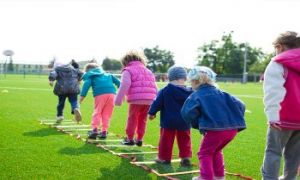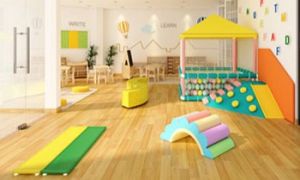In the wake of child abuse allegations and the rollout of policies like Four Eyes, early childhood educators are being asked to be more present, more vigilant, and more accountable. But presence alone is not enough. True safeguarding requires witnessing—not just watching. To witness is to be emotionally attuned, relationally responsive, and ethically grounded. It means seeing the child not as a subject of supervision, but as a whole person—worthy of affirmation, protection, and care.
Watching vs. Witnessing: What’s the Difference?
| Watching | Witnessing |
|---|---|
| Passive observation | Active, emotionally intelligent engagement |
| Focused on compliance and risk | Focused on dignity, safety, and relational trust |
| Sees behavior | Sees context, emotion, and meaning |
| May feel cold or clinical | Feels warm, affirming, and protective |
| Often reactive | Proactively supports well-being and emotional safety |
Why Witnessing Matters in Safeguarding
- Children thrive when they feel seen—not just supervised.
- Witnessing helps educators notice subtle shifts in mood, behavior, or relational dynamics that may signal distress.
- It builds trust and emotional safety, which are essential for disclosure, healing, and resilience.
How Educators Can Practice Witnessing
1. Be Emotionally Present
- Use soft eyes, open posture, and an affirming tone.
- Pause to truly listen—don’t rush to redirect or fix.
2. Reflect and Affirm
- Mirror children’s emotions: “You look unsure—do you want to tell me more?”
- Use validating language: “That sounds really big. I’m glad you told me.”
3. Document with Depth
- Go beyond “child was upset”—note what triggered it, how they expressed it, and what helped.
- Include the child’s voice in documentation: “I felt better when…”
4. Embed Witnessing into Routines
- During transitions, care routines, or play, ask, “What am I witnessing here?”
- Use symbolic tools like emotion cards, safe space drawings, or “I feel seen when…” prompts.
5. Support Each Other
- Debrief with colleagues: “What did you witness today that moved you?”
- Normalize emotional reflection in team meetings and supervision.
Practical Examples of Watching vs Witnessing
Here’s a set of practical, emotionally intelligent examples that illustrate the difference between watching and witnessing in early childhood settings, especially in the context of safeguarding, trauma-informed care, and relational practice:
| Scenario | Watching (Passive) | Witnessing (Relational & Responsive) |
|---|---|---|
| Toileting Routine | Staff stands nearby, checks box “Two adults present.” | Staff notices child’s hesitation, gently asks “Would you like me to wait outside the door?” and affirms their autonomy. |
| Child Crying in Corner | Staff notes “Child upset during transition.” | Staff kneels beside child, says “I see you’re having a big feeling. Want to sit with me?” and logs emotional context. |
| Playground Conflict | Staff says “Stop fighting,” and moves on. | Staff observes body language, helps children name emotions: “It looks like you felt left out. Let’s talk it through.” |
| Documentation | Writes “Child was withdrawn today.” | Writes “Child seemed quiet after drop-off. Said ‘I miss my mum.’ Drew a heart and smiled when we talked about her.” |
| Group Time | Staff monitors behaviour, corrects disruptions. | Staff notices child disengaged, later asks “What would help you feel more included next time?” |
| Parent Handover | Staff says “All good today.” | Staff shares: “She was proud of her painting and said she made it for you. She asked if you’d hang it up.” |
| Four Eyes Compliance | Logs presence of second adult during care. | Second adult actively affirms child’s dignity: “You’re doing great. We’re here to help you feel safe.” |
Key Takeaways
- Watching protects the body. Witnessing protects the soul.
- Witnessing builds trust, emotional safety, and relational depth—especially critical after abuse allegations.
- It transforms compliance into compassion and policy into practice.
To witness is to protect with presence, to affirm with empathy, and to respond with integrity. It’s how we move from surveillance to safeguarding, from policy to practice, from fear to trust.
Let us be the adults who don’t just watch but witness.
Further Reading
Four Eyes Policy
Active Supervision In Early Childhood Settings
Q: Am I In Ratio If I Am Completing Other Tasks Within The Room?
Educator-to-Child Ratios: A System Built for Profit, Not Quality Care
Mixed Age Ratios In An Early Childhood Service
Under the Roof Ratios
Educator To Child Ratio Calculator
Implementing Under The Roof Ratios
Educator to Child Ratios In Early Childhood Services
NSW Staff Ratios and Adequate Supervision
Safe Ratio Recommendations In Early Childhood
Critical Reflection Questions For Ratios
Opinion: Are Current Childcare Staffing Ratios Enough
Opinion: Should the “Under the Roof” Staffing Loophole Be Closed
Ratios and Burnout: The Hidden Cost of “Minimum Standards”
Educator To Child Ratio Posters







 As an Educator in Australia, your pay rate falls under the Children’s Services Award 2010. This award states the minimum amount that an employer can
As an Educator in Australia, your pay rate falls under the Children’s Services Award 2010. This award states the minimum amount that an employer can When working as a qualified Early Childhood Teacher (with a university degree) within a service, your rate of pay will come from the Educational Services
When working as a qualified Early Childhood Teacher (with a university degree) within a service, your rate of pay will come from the Educational Services When working as a Diploma Qualified Educator your pay rate is from the Children's Services Award 2010. This Award states your minimum rate of pay
When working as a Diploma Qualified Educator your pay rate is from the Children's Services Award 2010. This Award states your minimum rate of pay When working as a Cert 3 Qualified Educator, your pay rate is from the Children's Services Award 2010. This Award states your minimum rate of
When working as a Cert 3 Qualified Educator, your pay rate is from the Children's Services Award 2010. This Award states your minimum rate of Educational Leaders play a crucial role in their early childhood service by ensuring that the educational program aligns with best practices and supports the holistic
Educational Leaders play a crucial role in their early childhood service by ensuring that the educational program aligns with best practices and supports the holistic In early childhood education and care, ratios are more than a technicality—they are a frontline safeguard. Every child deserves responsive supervision, emotional connection, and developmental
In early childhood education and care, ratios are more than a technicality—they are a frontline safeguard. Every child deserves responsive supervision, emotional connection, and developmental With the new national child safety reforms kicking in on 1 September 2025, early childhood services like yours have a real opportunity to lead the
With the new national child safety reforms kicking in on 1 September 2025, early childhood services like yours have a real opportunity to lead the Here’s a comprehensive Mobile Phone and Smart Watch Policy tailored for early childhood education and care (ECEC) services in Australia, aligned with the latest 2025
Here’s a comprehensive Mobile Phone and Smart Watch Policy tailored for early childhood education and care (ECEC) services in Australia, aligned with the latest 2025 The Sea of Fish Challenge is a national initiative that invites children, educators, families, and communities to create and display fish artworks as a symbol
The Sea of Fish Challenge is a national initiative that invites children, educators, families, and communities to create and display fish artworks as a symbol Across the early childhood education and care sector, educators are sounding the alarm: current staffing ratios are insufficient to deliver safe, meaningful, and developmentally appropriate
Across the early childhood education and care sector, educators are sounding the alarm: current staffing ratios are insufficient to deliver safe, meaningful, and developmentally appropriate


